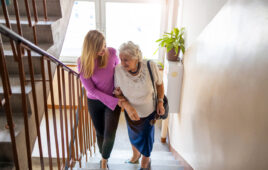Are you and your sleep lab BFF? According to Ann Tisthammer, BS, RRT, vice president of clinical education at ResMed, you should be. She says to have a successful partnership, sleep providers must become the “best friend” of the sleep lab.
The “best friend” strategy means focusing on educating sleep technicians about new treatment modalities and the latest areas of sleep-disordered breathing and its associations with other co-morbidities.
“When it comes down to all the different PAP modalities that are out there, from CPAP to autoPAP, to adaptive servo-ventilation, it’s our responsibility to go in and educate the sleep techs on the technologies,” she says. “I think it’s critical. They may not get a lot of exposure to training seminars on different technologies.”
Training the sleep lab should also involve educational courses on disease states, the appropriate patients for the different modalities, how to make adjustments to the settings and how to titrate on different technologies.
Sleep providers can act as the liaison between sleep labs and respiratory manufacturers to bring in vital training. “It shows the HME provider is really interested in helping the lab do the best titration they can do,” Tisthammer says.
Training also benefits the HME provider. An unsuccessful titration or a titration on the wrong device could cut into the provider’s bottom line, Tisthammer says. If a patient was referred for a CPAP device but the more appropriate device is a bi-level device, the provider must chase down a new prescription or deal with the effects of noncompliance.
Tisthammer also advises sleep providers to emphasize their patient management and follow-up programs. She says providers must sell themselves on their sleep program or processes, including educational setup, mask fitting, follow-up and ongoing compliance program. “The lab does not want to send referrals out to an HME that just … throws the box over the fence and tells the patient, ‘It’s pretty easy. You can set it up yourself,’ ” she says.
Training also helps technicians identify central sleep apnea and Cheynes-Stokes respiration, where these patients do not present the classic obstructive sleep apnea symptoms, such as snoring and daytime sleepiness. Increased efforts this year have paid off, Tisthammer says. “More and more labs are now seeing it. I think they’re now looking for it or they understand a little bit better what they’re looking at.”
Educating sleep technicians also might help grow the sleep industry as a whole. Tisthammer says that historically, there’s been a shortage of sleep technicians. As a result, many sleep technicians that don’t have a clinical or medical background are entering the field. At SLEEP 2007 in Minneapolis, the Board of Registered Polysomnograhic Technologists reported that it’s adding 1,500 new registered sleep technicians to the field each year, Tisthammer says.
“It’s showing that people are interested in the field, are gaining job competencies and sitting for the registry test,” she says. “They see that this is a viable market, it’s definitely a great career path. We just have to continue to help them do that.”

